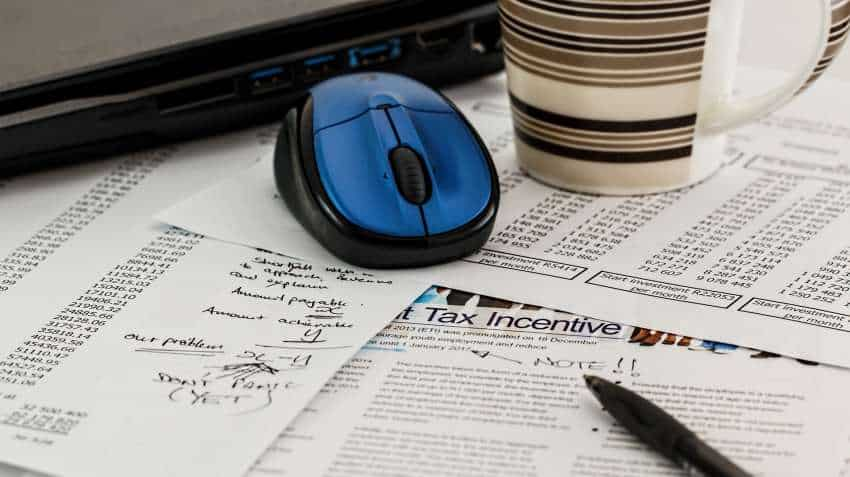Advance income tax: How to calculate and where to pay
Advance income tax has to be paid in installments on specific dates, and it must be paid in the same year as their income.

Advance income tax, or the pay-as-you-earn scheme, is when taxpayers pay their taxes before the end of the fiscal year. If a taxpayer owes more than Rs 10,000 in taxes for the year, they must pay this tax. It has to be paid in installments on specific dates, and it must be paid in the same year as their income. This system ensures that the government has a consistent income flow throughout the year.
What is advance income tax?
Advance tax is income tax that is paid in advance rather than in a lump sum at the end of the fiscal year. It is the tax people pay on their earnings. These payments must be made in installments according to the income tax department's due dates.
Who has to pay advance income tax?
-Taxpayers who owe more than Rs 10,000 in taxes after adjusting TDS in a fiscal year are required to pay advance tax. This rule applies to all categories of taxpayers, including freelancers, professionals, salaried individuals, and senior citizens.
-Senior citizens above the age of 60 years and the one who owns an enterprise are liable to pay advance tax.
-For taxpayers who choose a presumptive tax regime under Section 44AD for businesses, they are supposed to pay the full advance tax in a single payment on or before March 15. Nevertheless, they can also pay their tax liabilities by March 31.
-Under the presumptive tax regime under Section 44ADA, independent professionals like architects, doctors, lawyers, consultants, etc., have to pay the full advance tax liability in a single payment either on or before March 15. They also have the option to pay the entire amount by March 31.
Section 44AD for businesses
Taxpayers opting for the presumptive taxation scheme under Section 44AD are liable to pay the whole amount of advance tax on or before March 15 of the previous year.
It should be noted that a person earning income in the nature of commission or brokerage cannot adopt the presumptive taxation scheme. Also, a person whose total turnover or gross receipts for the year exceed Rs 3 crore can’t opt for the presumptive taxation scheme of Section 44AD.
Earlier, this limit was Rs 2 crore, but in Budget 2023, this was raised to a new limit.
Section 44ADA
Specified professionals– legal, medical, engineering, accounting, technical consultancy, interior decoration, and any other profession notified by CBDT—get relief under Section 44ADA.
Professionals with less than Rs 75 lakhs per annum, which was earlier Rs 50-lakh income limit, can avail of the benefit of this section. The presumptive income is computed at a rate of 50 percent, which is considered the final income, and after this, no further expenses are permitted.
How to calculate advance income tax?
Advance tax is calculated on the basis of the expected tax liability of the year and is paid in installments.
i) At least to 15 per cent – On or before 15 June
ii) At least to 45 per cent – On or before 15 September
iii) At least to 75 per cent – On or before 15 December
iv) At least to 100 per cent –On or before 15 March
b) In the case of the eligible assessee as referred to in Sections 44AD and 44ADA:
100 per cent – On or before 15th March
Here is a step-by-step guide for advanced income tax calculation
Step 1: Determine the taxpayer's income for the fiscal year. These are the income categories that should be considered when calculating earnings:
-Income from FDs, savings accounts, and other investments.
-Gains in capital
-Professional earnings
-Rental earnings
-Minors' earnings, when added to those of the taxpayer
-Other sources of income
Step 2: To calculate gross taxable income, add the salary to the figure above
Step 3: Determine tax liability by using the most recent income tax slab that applies to the taxpayer.
Step 4: Using the TDS slab, subtract the TDS deducted.
According to the Bureau of Energy Efficiency (BEE), the optimal temperature for the human body is 24 degrees Celsius, and any AC will require less load to accomplish that goal. As a result, it is preferable to keep the AC temperature about 24 degrees Fahrenheit. This will conserve more electricity while also lowering the bill.
Get Latest Business News, Stock Market Updates and Videos; Check your tax outgo through Income Tax Calculator and save money through our Personal Finance coverage. Check Business Breaking News Live on Zee Business Twitter and Facebook. Subscribe on YouTube.
RECOMMENDED STORIES

SBI 444-day FD vs PNB 400-day FD: Here's what general and senior citizens will get in maturity on Rs 3.5 lakh and 7 lakh investments in special FDs?

Looking for short term investment ideas? Analysts suggest buying these 2 stocks for potential gain; check targets
04:36 PM IST










 ITR Filing Last Date 2023: Deadline approaches for Income Tax Return Filing for FY 2022-23
ITR Filing Last Date 2023: Deadline approaches for Income Tax Return Filing for FY 2022-23 IT raids at premises linked to Lux Industries amid allegations of tax evasion
IT raids at premises linked to Lux Industries amid allegations of tax evasion Net direct tax collection soars 23.5% to over Rs 8.65 lakh crore on better advance tax mop-up
Net direct tax collection soars 23.5% to over Rs 8.65 lakh crore on better advance tax mop-up ITR: Didn't get your income tax refund so far? Here's what you should do now
ITR: Didn't get your income tax refund so far? Here's what you should do now Fixed Deposit or Liquid Fund: Where will I get the maximum benefit?
Fixed Deposit or Liquid Fund: Where will I get the maximum benefit?